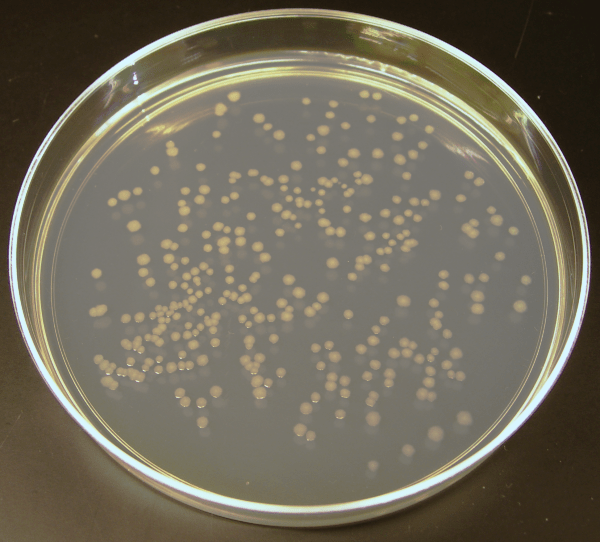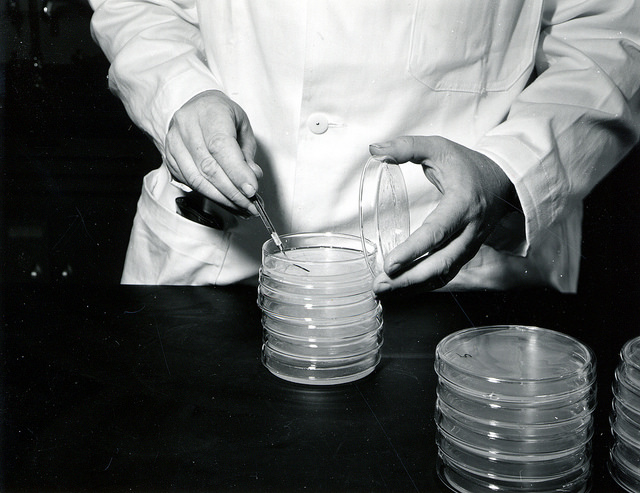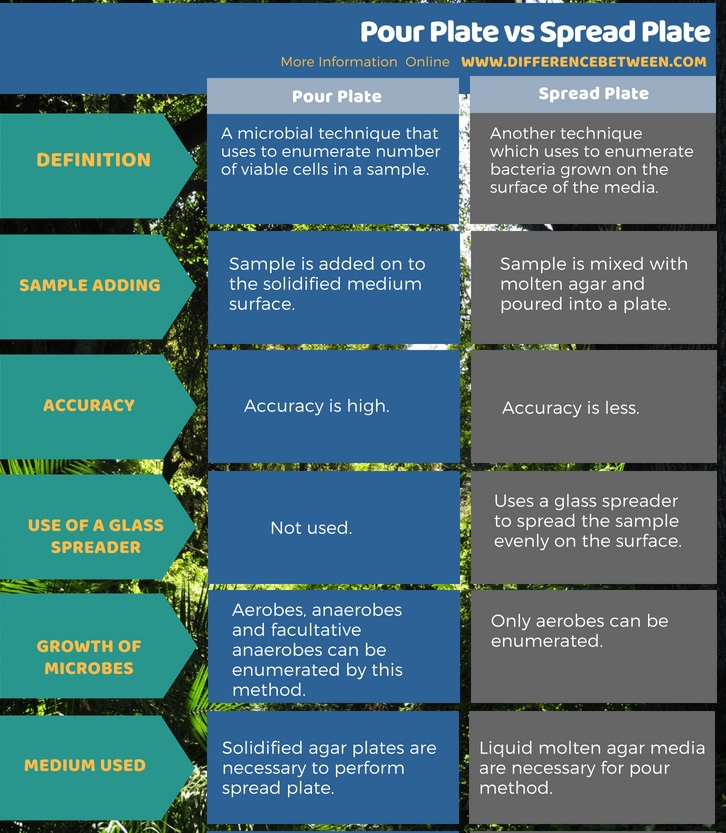Difference Between Pour Plate and Spread Plate
The key difference between Pour plate and Spread plate is that a known volume of the sample is spread on the surface of the agar medium in spread plate, while, in pour plate, a known volume of the sample is mixed with agar and then poured into a plate. When comparing the accuracy of these two techniques, pour plate has a higher accuracy than the spread plate.
Standard plate count method is a growth based approach that counts the number of living (growing/cultivable/viable) microorganisms within a sample. It is a powerful method in use, in many microbiological fields to analyse the number of living microorganisma. The fields such as food and dairy, medical, environmental, aquatic and agricultural, microbial genetics, molecular microbiology, growth media development, and Biotechnology (bioreactor technology, fermentation, waste/wastewater treatment etc) utilize this technique. Furthermore, there are two main ways to perform a standard plate count: they are, Spread plate technique and Pour plate technique.
CONTENTS
1. Overview and Key Difference
2. What is Pour Plate
3. What is Spread Plate
4. Similarities Between Pour Plate and Spread Plate
5. Side by Side Comparison – Pour Plate vs Spread Plate in Tabular Form
6. Summary
What is Pour Plate?
Pour plate technique is a microbial method to enumerate some viable cells present in a sample. The speciality of the pour plate method is that a known volume of the sample is first mixed with agar and then poured into the plate.

Other steps are similar to the spread plate technique discussed in the next section. The next step after pouring the agar mixed with the sample is to allow it to solidify and incubate. After incubation, counting the number of viable colonies is essential to calculate the final CFU for 1 g or 1 ml.
What is Spread Plate?
Spread plate is a technique to enumerate viable cells in a sample. For this technique, a serial dilution is necessary for the sample to ensure that at least one gives rise to a countable number of colonies. The process here is to pipet a set volume of dilution onto the surface of an agar plate and spread it quickly and evenly over agar surface with a glass spreader, which has been alcohol flamed and cooled. Performing the replicates is necessary to obtain a reliable mean value. Next step is to dry these plates for a short period, and then invert and place them in an incubator at a suitable temperature for growth and for a set incubation period.

After incubation, examining the plates will show the growth. At one or more dilutions, the numbers of cells present in the inoculants (e.g. 100 or 200μl) will give rise to between 30 and 300 discrete colonies on the agar surface. Less than 30 colonies counts are statistically unreliable. Counts above 300 are difficult to enumerate and prone to error.
What are the Similarities Between Pour Plate and Spread Plate?
- Spread plate and pour plate are two techniques to obtain number of viable cells present in a sample.
- Both are straight forward methods.
- Sampling errors can happen in both methods.
- Limitations of growth conditions affect the outcome of both methods.
- Technical errors are also can interfere the final result of both methods.
- Though viable, the two methods are not in use to grow un-culturable bacteria.
What is the Difference Between Pour Plate and Spread Plate?
Pour plate is a microbial technique to enumerate a number of viable cells in a sample. Spread plate technique is another technique to enumerate the bacteria grown on the surface of the media. In pour plate technique, the process is to add the sample onto the solidified medium surface on the pour plate. But, in the spred plate technique, the process is to mix the sample with the molten agar and then pour that into the plate.
With regard to the accuracy of these two techniques, pour plate has a higher accuracy than the spread plate. Moreover, unlike in a pour plate, a glass spreader is used to spread the sample evenly on the surface on a spread plate. Further, using pour plate, it is possible to enumerate the aerobes, anaerobes and facultative anaerobes. However, using the spread plate it is only possible to enumerate the aerobes. Furthermore, solidified agar plates are necessary to perform spread plate whereas liquid molten agar media are necessary for pour method.

Summary – Pour Plate vs Spread Plate
Pour plate and Spread plate are two techniques in microbiology to facilitate the enumeration of microbial cells in a sample. Both methods are growth based hence, measure the viable cells. During the pour plate, a known volume of the sample is mixed with the molten agar and poured into the plate. During the spread plate, a known volume is spread on the surface of the solidified agar medium. This is the difference between pour plate and spread plate.
Reference:
1.“Making a Pour Plate | Nuffield Foundation.” The Truth behind SEN Statements in Mainstream Primary Schools | Nuffield Foundation. Available here
2.“Microbiology – 004 – Spread Plate Method.” Microbiology – 007 – Carbohydrate Fermentation Test | Microbiology Undergraduate Program. Available here
Image Courtesy:
1.’Ecoli colonies’By Madprime – Own work, (CC BY-SA 3.0) via Commons Wikimedia
2.’34743904365’by R6, State & Private Forestry, Forest Health P.. (Public Domain) via Flickr
ncG1vNJzZmivp6x7pbXFn5yrnZ6YsqOx07CcnqZemLyue8OinZ%2Bdopq7pLGMm5ytr5Wau268zq6pZqiclsGmecCnm2aroKeyorCMqaOarJVk